Demo video: Multi Company Stock Location Account
The problem
With the auto inventory valuation configuration of the system, when you transfer goods in/out locations (e.g. Inventory adjustment, Production), the system will also generate accounting journal entries automatically based on those stock valuation accounts.
However, these Stock Valuation Accounts fields of the stock location model do not respect the multi-company environment.
In other words, every inventory adjustment move will be encoded into the same company's accounts no matter the company of the adjustment.
The solution
- This module fixes the above problem by supporting a multi-company environment for stock location's valuation accounts.
- With this module, every inventory adjustment/manufacturing moves now respect the company of the operation.
Editions Supported
- Community Edition
- Enterprise Edition
Installation
- Navigate to Apps.
- Search with keyword to_multi_company_stock_location_account.
- Press Install.
Instruction
Instruction video: Multi Company Stock Location Account
1. Configuration.
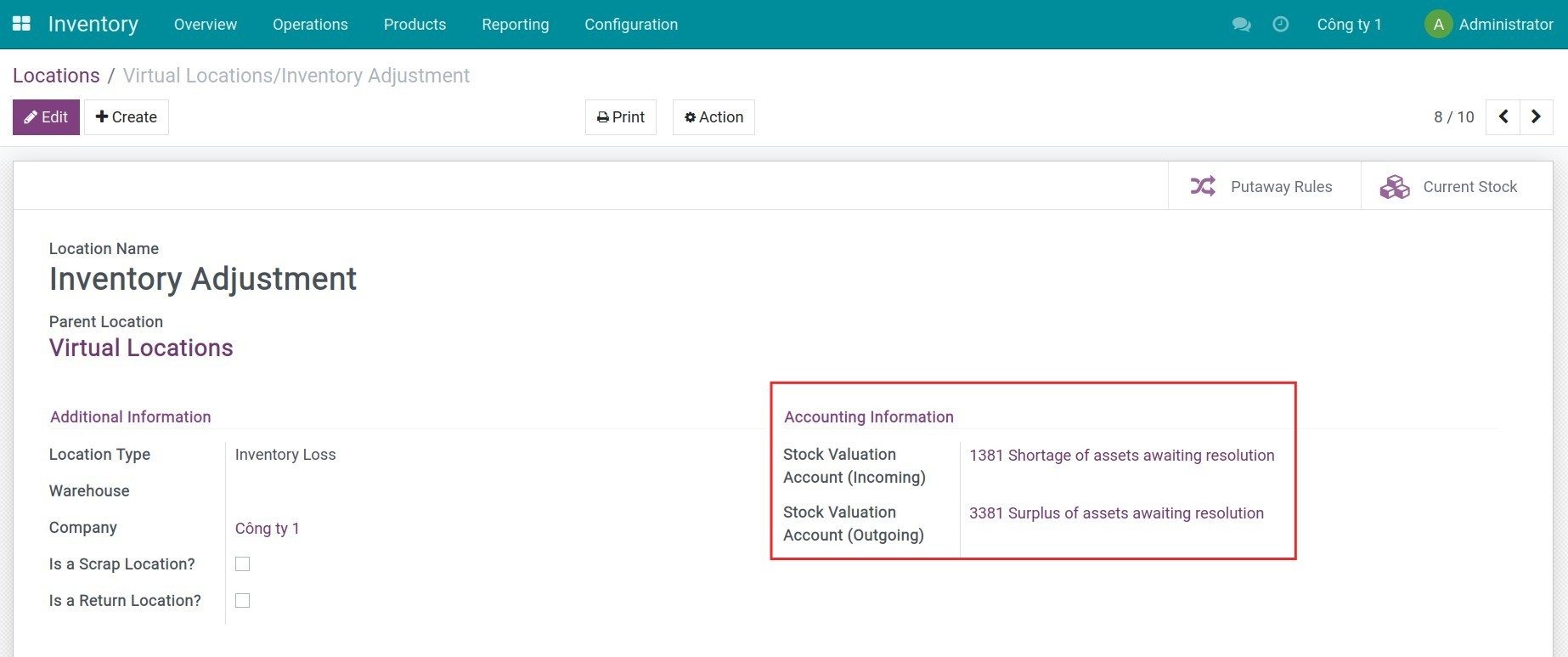
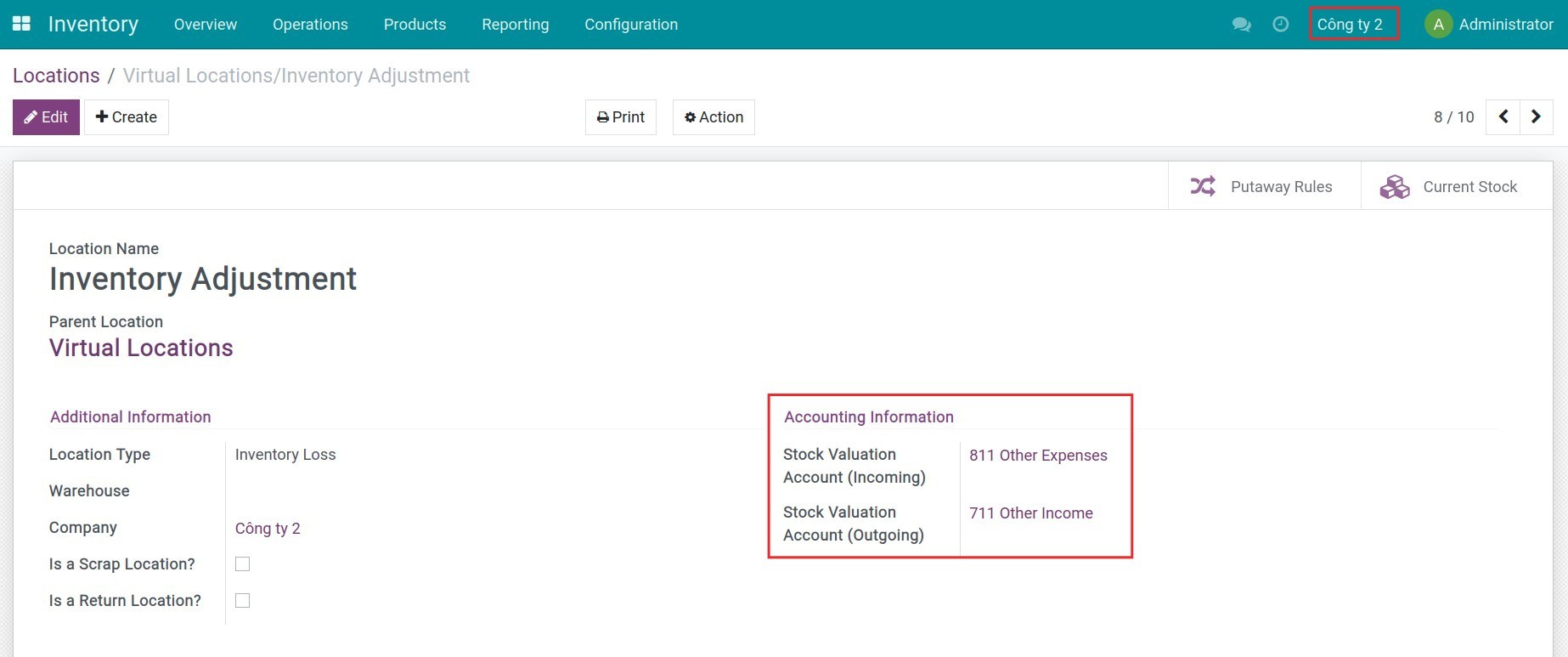
2. Create a product and update the cost.
You create a product and create a purchase order for the same product with two different unit prices at two companies. In the view of the product from each company, you will see the different costs.
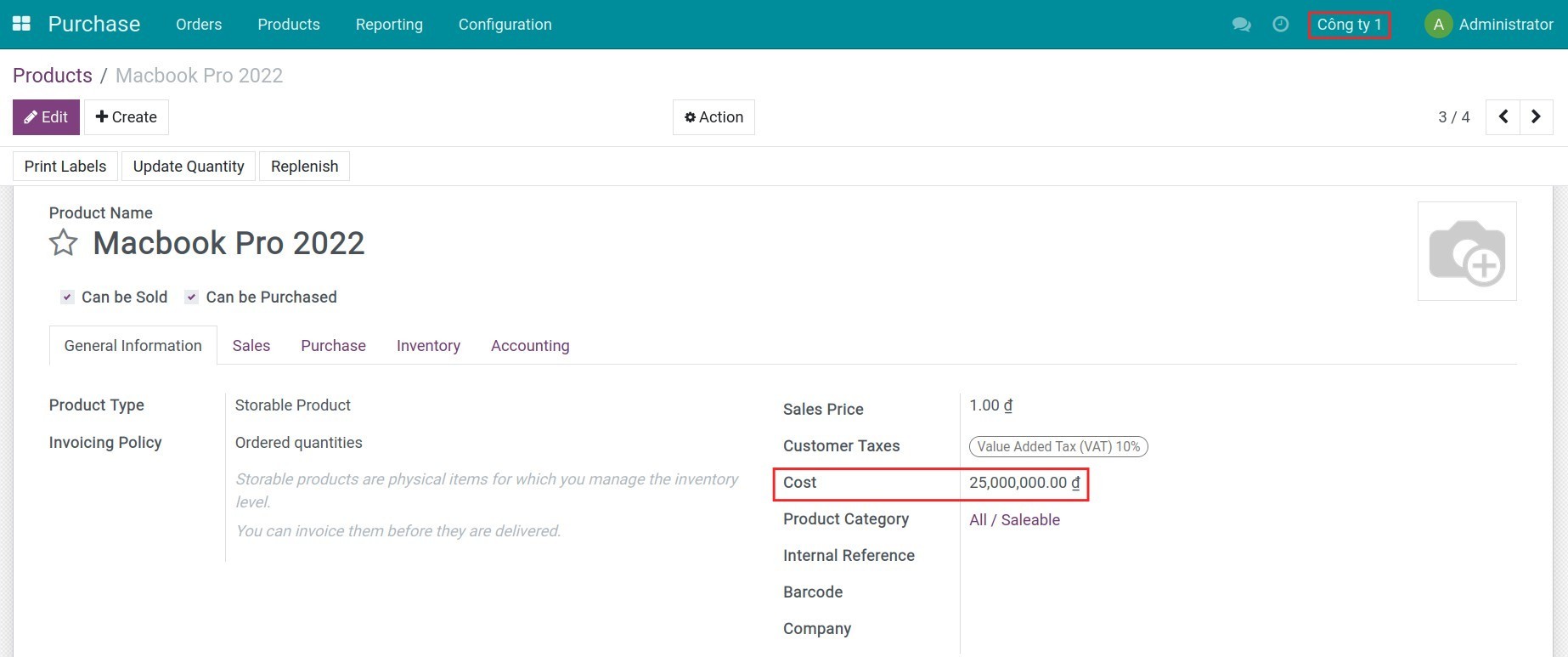
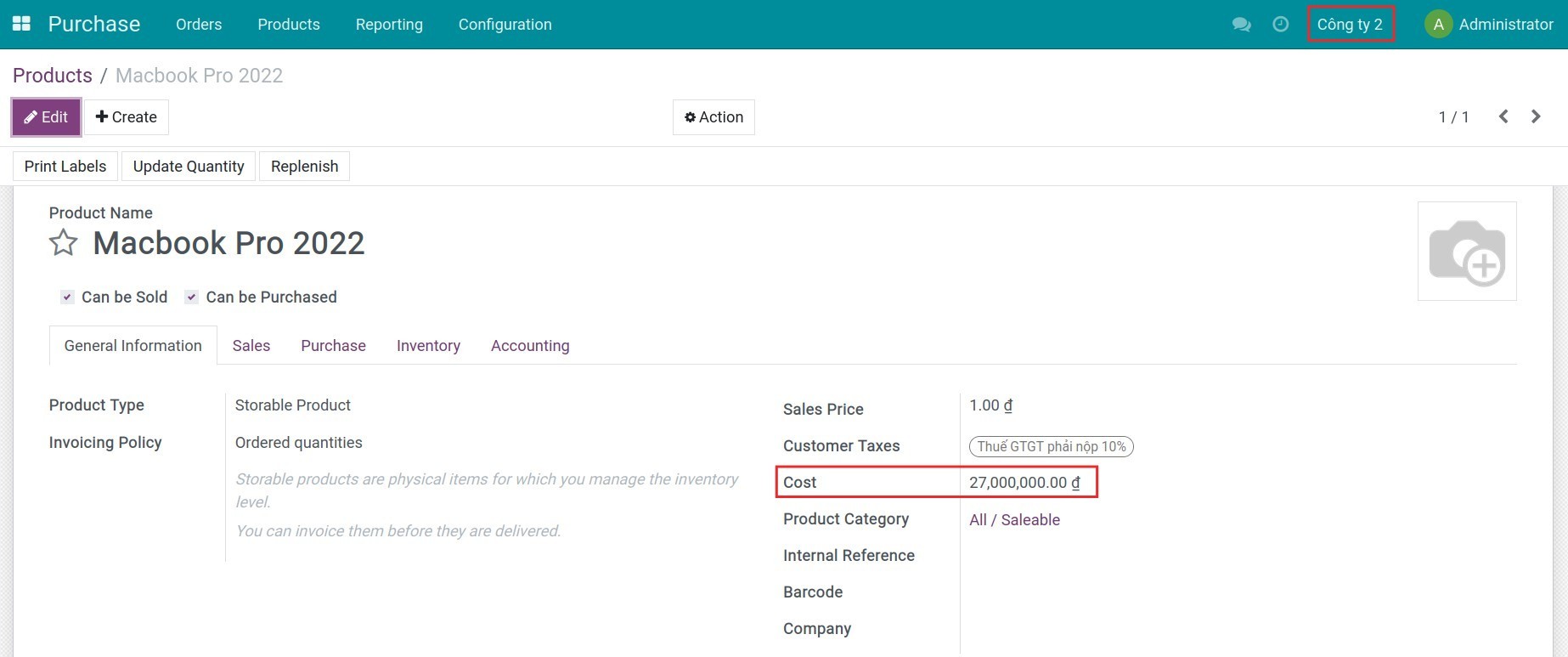
Note: You need to configure the automated inventory valuation.
3. Make an inventory plan.
In company 1, go to Inventory app > Operations > Inventory Adjustments, press Create to make an inventory adjustment of product. After finishing the product counting, you need to update the available product quantity into the Counted Quantity column. The difference between the On Hand Quantity and the Counted Quantity will be automatically computed.

Go to Accounting app > Accounting > Journal entries, and use the filter to fill out the auto adjustment journal entries in company 1.
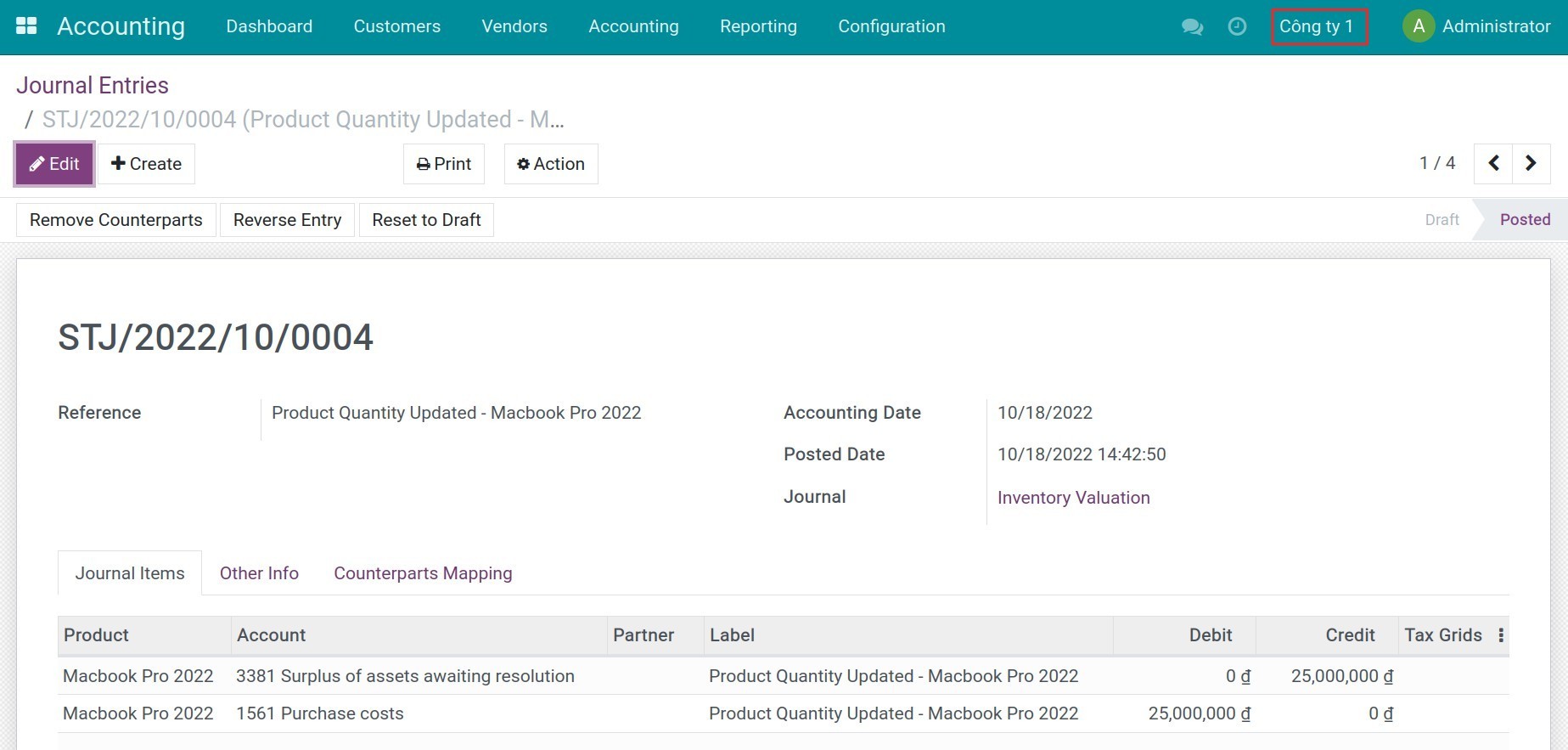
As the same steps in company 1, you do it for company 2.
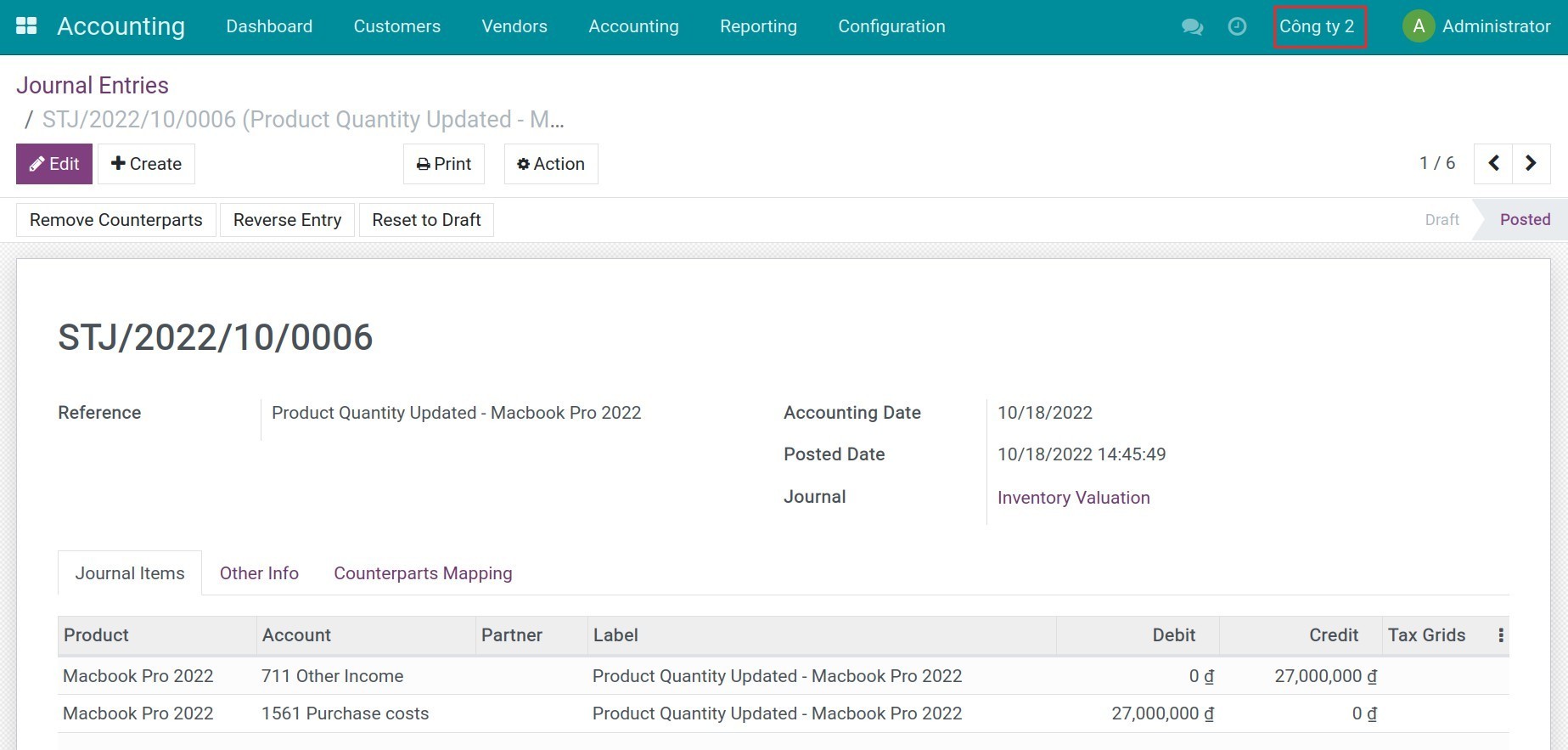
This software and associated files (the "Software") may only be
used
(executed, modified, executed after modifications) if you have
purchased a
valid license from the authors, typically via Odoo Apps,
or if you
have
received a written agreement from the authors of the
Software (see the
COPYRIGHT file).
You may develop Odoo modules that use the Software as a library
(typically
by depending on it, importing it and using its
resources), but
without
copying any source code or material from the
Software. You may distribute
those modules under the license of your
choice, provided that this
license
is compatible with the terms of
the Odoo Proprietary License (For
example:
LGPL, MIT, or proprietary
licenses similar to this one).
It is forbidden to publish, distribute, sublicense, or sell
copies of the
Software or modified copies of the Software.
The above copyright notice and this permission notice must be
included in
all copies or substantial portions of the Software.
THE SOFTWARE IS PROVIDED "AS IS", WITHOUT WARRANTY OF ANY KIND,
EXPRESS OR
IMPLIED, INCLUDING BUT NOT LIMITED TO THE WARRANTIES OF
MERCHANTABILITY,
FITNESS FOR A PARTICULAR PURPOSE AND
NONINFRINGEMENT. IN NO EVENT
SHALL THE
AUTHORS OR COPYRIGHT HOLDERS
BE LIABLE FOR ANY CLAIM, DAMAGES OR OTHER
LIABILITY, WHETHER IN AN
ACTION OF CONTRACT, TORT OR OTHERWISE,
ARISING
FROM, OUT OF OR IN
CONNECTION WITH THE SOFTWARE OR THE USE OR OTHER
DEALINGS IN THE
SOFTWARE.







